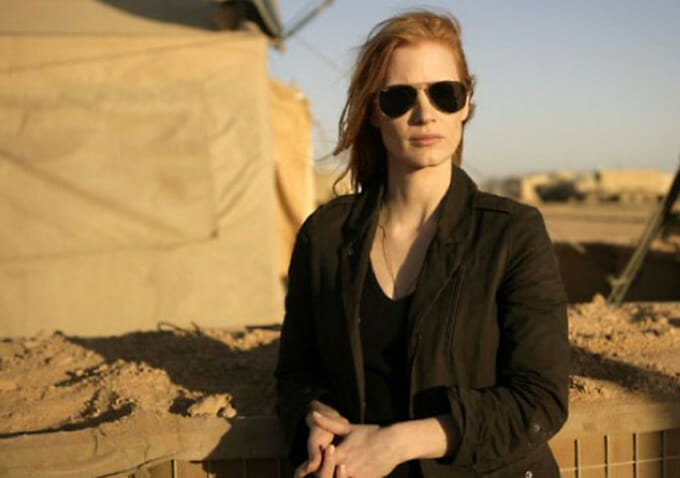Zero Dark Thirty

It’s a rare occasion when a major theatrical film is as timely as director Kathryn Bigelow’s widely acclaimed military drama, Zero Dark Thirty. Bigelow had been collaborating with her The Hurt Locker screenwriter Mark Boal on a film about the futile hunt for Osama bin Laden when the al-Qaeda overlord met his demise via Seal Team 6. Bigelow and Boal rewrote the entire final act—quickly—changing their film, but sticking to the basic facts. The result is a remarkably thorough, unexpectedly cinematic, two-and-half-hour chronicle of American persistence.
The pervading emotion one derives from Zero Dark Thirty is a sense of gratitude, not only for the intel brains and military balls that infiltrated the cover surrounding the world’s most wanted man, but that someone like Michael Bay didn’t get his explosive-happy hands on this story. It’s easy to imagine this via Bay’s Pearl Harbor, full of chest-pounding jingoism, flag-waving braggadocio, and a cutesy boy-meets-girl subplot. Bigelow and Boal know that the actual proceedings speak volumes more.
But don’t expect a documentary-style film. For starters, we’ve got a traditional central character, the driven but flawed independent woman. Jessica Chastain has a sort of gritty elegance as Maya, an intelligence operative who begins her assignment in 2003 a little green around the edges, and ends it in 2011 as a tough, semi-obsessed expert.
Bigelow’s direction is as structured and familiar as it’s ever been; she’s just never had this much subject matter to cover. Her spit and polish as an action filmmaker is a fantastic complement—and contradiction—to Boal’s exhaustive, investigative-reporter style of story development. Think of Zero Dark Thirty as a Hollywood adaptation of a step-by-step CIA report, complete with false leads, shots in the dark, prisoner interrogation, hesitant decision-making and thousands of hours of surveillance video.